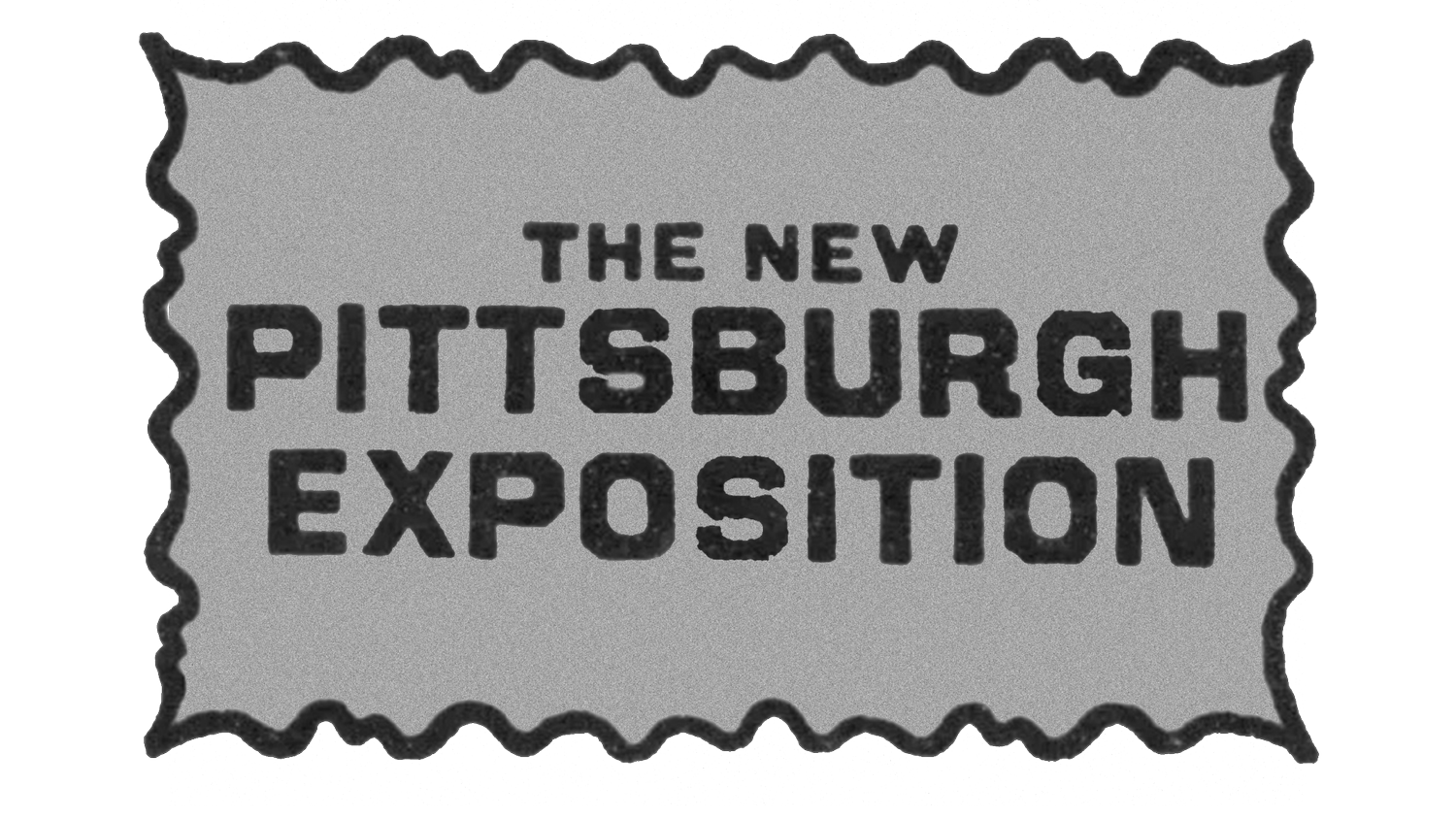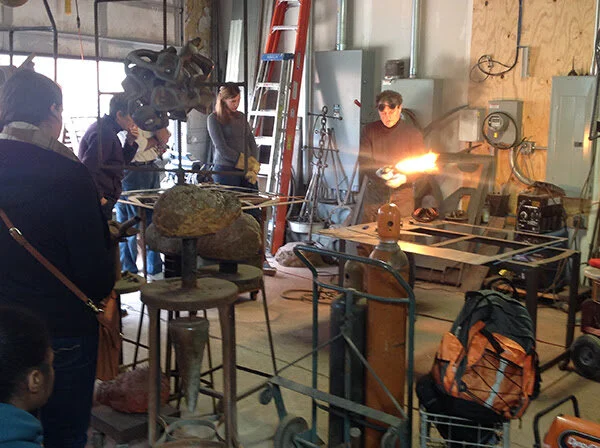Remembering James Shipman. 1953 — 2020
Pittsburgh artist James Shipman in a profile photo by the Pittsburgh Post-Gazette standing in a sculpture garden he designed in 2015.
James Shipman, a versatile Pittsburgh artist, who distinguished himself in over 40 years of creating sculptural and collage art pieces that transcended form and substance, utilizing materials like clay, metal, wood, and various unusual objects, died in October. He was 67.
A longtime resident of Park Place, Mr. Shipman had an art studio, workshop, and exhibition gallery in the Landmarks Preservation Resource Center since 2010, when our organization renovated and converted the building from an auto-repair shop to an education and events space in Wilkinsburg, Pennsylvania.
A professional sculptor and master ceramist, Mr. Shipman first gained prominence on the Pittsburgh art scene through his studio in the Millvale Industrial Park, which he opened in the mid-1980s. There, he created commissioned art pieces and collaborated with various artists utilizing a work space he had designed over time, which included a woodshop, welding room, three high-fire gas kilns, a furnace for casting, and a complete ceramics facility.
“One does what one is good at hopefully. I was always good at making something from nothing. Creative thinking, use of the imagination, what America is about,” Mr. Shipman said as he reflected on his craft after being commissioned to create sculptures for the Three Rivers Arts Festival in 1996 entitled, Points of Departure.
“Art is about magic, mystery, and meditation,” he added.
This butterfly created by Mr. Shipman hangs on a fence marking a former vacant lot in Wilkinsburg, which our organization converted into a wild flower and grass garden as a habitat for bees, butterflies, and fireflies.
A graduate of Marietta College, where he received his Bachelor of Fine Arts degree, he also held a Master of Fine Arts degree in ceramics and sculpture from Carnegie Mellon University, where he would later teach as an adjunct for many years. He also taught summer programs at the Manchester Craftsman’s Guild and established a fine art service company called ShipArt Pgh.
Displaced from Millvale by the Pennsylvania Department of Transportation’s expansion of State Route 28, Mr. Shipman was looking for space when he discovered, fortuitously, that our organization was completing the renovation of a building at 744 Rebecca Avenue, in the Hamnett Place neighborhood.
Back in Wilkinsburg, with a studio only five blocks away from his Park Place house, Mr. Shipman relished the idea that he had returned, professionally, to the neighborhood where he spent the first 10 years of his life. From his studio on Rebecca Avenue, he often gave visitors a historic perspective on how the neighborhood had changed, recalling memories of living in a now dilapidated house, a block away on Franklin Avenue, and attending school, just up the street, at St. James Catholic Church School, from first grade through fourth grade.
Mr. Shipman gave educational workshops and art symposia in partnership with our organization.
In his studio, Mr. Shipman drew and painted. He sculpted, built kilns, and created ceramics. He opened his space both for educational workshops and art symposia in partnership with our organization, and also participated in community art events.
He hung his artwork on the walls of the building including large round ceramic pieces he called earth disks, hot shot drawings, concrete, and steel planters. He also re-pointed and hung on the exterior of the building iron artifacts our organization saved from the former Manchester Bridge when it was demolished, in 1970. He would go on to transform a blighted lot densely packed with auto parts, oil, rocks, cinder blocks, and towering weeds, by removing all of the debris, planting grass, and installing sculptures, creating a serene garden.
The sculpture garden, which includes a wall with photographs and signs that pay tribute to the history of Penn Avenue businesses, along the historic Lincoln Highway in Wilkinsburg, was later featured in an international gardening magazine published in the United Kingdom. He opened it with a community reception in 2015, when he celebrated his more than 40-year career as an artist.
Mr. Shipman is survived by his wife Jennifer Bell, and a daughter, Elizabeth.



